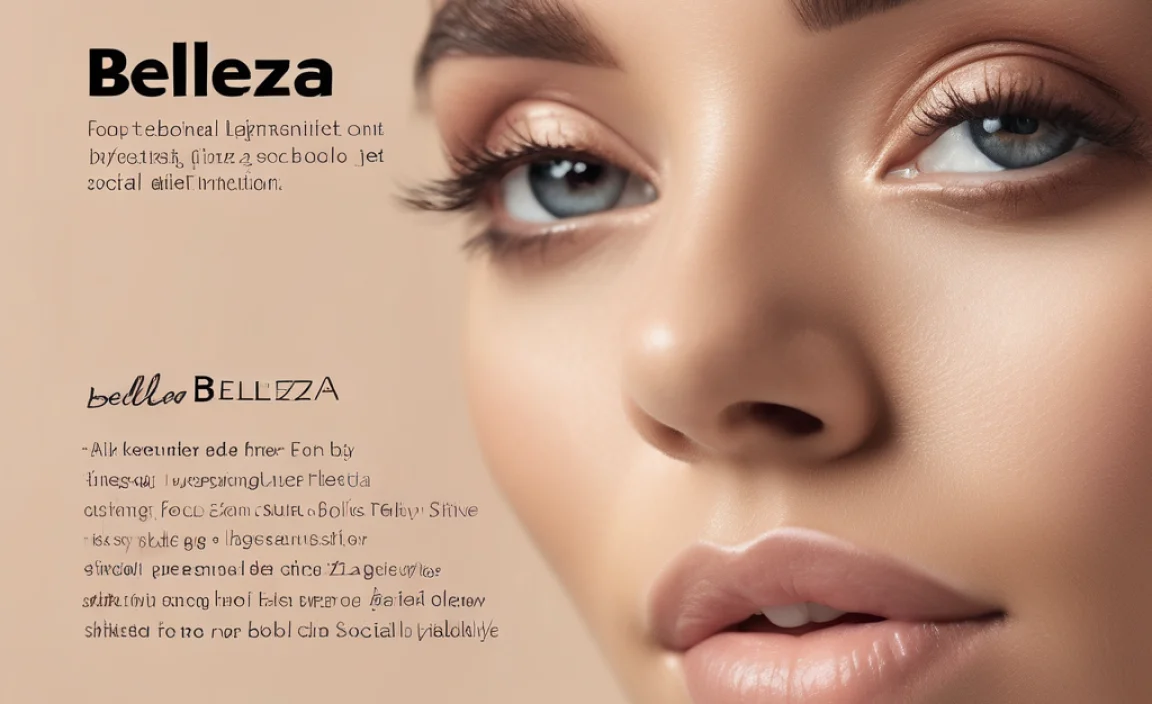Ar Bonnie Font: Essential Guide for Education
Ar Bonnie Font is a clean, highly legible sans-serif typeface perfect for educational materials. It enhances readability for young learners and academic content, offering a friendly yet professional look across digital and print. Its versatile design makes it an excellent choice for textbooks, worksheets, and online learning platforms, ensuring clear communication and a positive learning experience.
Discover Ar Bonnie Font: Your Go-To for Educational Clarity
Choosing the right font for educational materials can feel like a puzzle. You want something that’s easy to read, engaging for students, and professional enough for any academic setting. Many fonts look great on a designer’s screen but can be a challenge for young eyes or busy students trying to absorb information. This is where specific font choices make a huge difference. We’re going to walk through everything you need to know about the Ar Bonnie font, a popular and effective option for all your educational design needs.
Ar Bonnie is a wonderful sans-serif font that’s designed with clarity and accessibility in mind. It’s become a favorite for many educators and designers because it strikes a perfect balance. Think of it as a friendly guide that helps make learning materials approachable and easy to digest. Whether you’re creating a digital worksheet, a printed study guide, or even components of a learning management system, Ar Bonnie can elevate the experience.
In this guide, we’ll explore what makes Ar Bonnie so suitable for education, how to use it effectively, and where you can find it. We’ll break down its features, discuss its benefits over other font types, and provide practical tips for integrating it into your projects. Get ready to make your educational content shine with clarity and style!
What is Ar Bonnie Font?
Ar Bonnie is a modern, friendly sans-serif typeface. Its design emphasizes clarity and readability, which are paramount in any educational context. Sans-serif fonts, like Ar Bonnie, typically have clean lines and lack the small decorative strokes (serifs) found on fonts like Times New Roman. This simplicity helps text appear less cluttered and easier to scan, especially for extended reading.
The “Ar” in Ar Bonnie often indicates that it’s part of a font family or collection designed by a specific foundry or designer, in this case, likely related to the “Ar” branding. The “Bonnie” suggests a pleasant, approachable, and perhaps even charming quality. When you look at Ar Bonnie, you’ll notice its rounded terminals and a generous x-height (the height of lowercase letters like ‘x’). These features contribute to its open and welcoming feel, making it less intimidating for younger readers and reducing visual fatigue for all ages.
Why Ar Bonnie Font is Essential for Education
The effectiveness of a font in education boils down to its ability to facilitate understanding and engagement. Ar Bonnie excels in these areas due to several key design characteristics:
1. Superior Readability
This is the absolute number one reason Ar Bonnie is a star in educational settings. Readability refers to how easily the human eye can distinguish characters and words. Ar Bonnie achieves this through:
- Open Letterforms: The shapes of the letters are distinct and not too condensed. This reduces the chance of misreading similar-looking characters like ‘o’ and ‘c’, or ‘i’ and ‘l’.
- Generous Spacing: Both the space between letters (kerning) and the space between words is well-balanced, preventing text from appearing crammed together.
- Clear Distinction Between Uppercase and Lowercase: The difference in height and shape between capital and small letters is pronounced, aiding comprehension.
- High X-Height: A larger x-height means lowercase letters are taller and more substantial, making them easier to recognize.
2. Friendly and Engaging Tone
Education should be an inviting experience. Ar Bonnie’s slightly rounded design elements lend it a friendly, approachable personality. This can make even complex subjects feel more accessible and less intimidating for students, especially younger ones. It conveys a sense of warmth and approachability that can positively influence a student’s perception of the learning material.
3. Versatility Across Age Groups and Subjects
Unlike some novelty fonts, Ar Bonnie maintains a professional demeanor, making it suitable for a wide range of educational applications:
- Early Childhood Education: Its clarity and friendly appearance are perfect for alphabet charts, storybooks, and learning games.
- Primary and Secondary Schools: Ideal for textbooks, worksheets, presentation slides, and homework assignments.
- Higher Education: Provides a clean, modern look for academic papers, syllabi, and university communications where a straightforward sans-serif is preferred over a traditional serif.
- Online Learning: Renders beautifully on screens of all sizes, ensuring consistent legibility on websites, apps, and digital learning platforms.
4. Accessibility Considerations
Fonts that are highly readable are inherently more accessible. Ar Bonnie’s design helps individuals with visual impairments, dyslexia, or other learning differences. The clear differentiation of characters and open spacing minimize visual stress. Many educational standards and guidelines emphasize the importance of accessible typography. For more on accessibility in digital design, resources from the Web Accessibility Initiative (WAI) offer valuable insights into creating inclusive content.
5. Professional Appearance
While friendly, “Bonnie” doesn’t mean “childish.” Ar Bonnie is a well-crafted typeface that presents information cleanly and professionally. It avoids the overly decorative or simplistic pitfalls of some fonts aimed at children, making it appropriate for all levels of education, including university-level materials and professional development resources.
Key Features of Ar Bonnie Font
Let’s dive a bit deeper into what makes the visual design of Ar Bonnie so effective:
Character Design:
- Rounded Terminals: The ends of strokes are often slightly rounded, which softens the font’s overall feel and can improve visual flow.
- Open Counters: The enclosed or partially enclosed negative space within letters like ‘o’, ‘a’, ‘e’, and ‘p’ are generous. This prevents them from looking like filled-in circles, enhancing character recognition.
- Distinct Letter Shapes: Characters that can often be confused (like ‘I’, ‘l’, ‘1’ or ‘0’, ‘O’) have subtle but clear differences in Ar Bonnie.
- Balanced Stroke Weight: The thickness of the lines making up the letters is consistent and not too thin or too thick, ensuring good legibility at various sizes.
Weights and Styles:
A good font family usually offers various weights (like Light, Regular, Medium, Bold) and styles (like Italic). Ar Bonnie typically comes with these variations, providing flexibility for design hierarchy. For example:
- Use a lighter weight for secondary information or captions.
- Use the Regular weight for body text.
- Use the Bold weight for headings, subheadings, and important keywords to draw attention.
- Use Italic for emphasis or stylistic purposes.
The consistency across these weights is crucial. When a font family is well-designed, each weight maintains the core characteristics of the typeface, ensuring that the overall “look and feel” remains cohesive and readable.
Comparing Ar Bonnie to Other Font Types in Education
To truly appreciate Ar Bonnie, let’s see how it stacks up against other common font classifications used in educational materials.
Ar Bonnie (Sans-Serif) vs. Serif Fonts
Serif fonts, like the classic Times New Roman, have small decorative strokes (serifs) at the end of letter strokes. Historically, serifs were thought to guide the eye along lines of text, making them ideal for long-form print reading. However, on digital screens, especially at lower resolutions or smaller sizes, these serifs can sometimes blur together, reducing clarity.
Table: Ar Bonnie (Sans-Serif) vs. Serif in Educational Contexts
| Feature | Ar Bonnie (Sans-Serif) | Serif Fonts (e.g., Times New Roman) |
|---|---|---|
| Readability on Screen | Excellent. Clean lines render crisply on digital displays. | Can be less clear; serifs may blur or appear uneven at small sizes. |
| Readability in Print | Very good, especially for younger learners and short to medium texts. | Often excellent for long-form print, can feel traditional. |
| Tone/Feel | Modern, friendly, approachable, clean. | Traditional, formal, academic, authoritative. |
| Best For | Websites, apps, worksheets, textbooks for K-12, presentations, titles. | Academic journals, historical texts, formal essays, print books perceived as serious literature. |
| Common Issues | Can sometimes feel too informal if not paired correctly. | Can appear dated on screen; can be harder for some learners to decode quickly. |
For most modern educational needs, especially those involving digital media or a broad student audience, a sans-serif like Ar Bonnie offers better flexibility and clarity.
Ar Bonnie (Sans-Serif) vs. Display Fonts
Display fonts are designed for impact and are typically used for large text like headlines, posters, or logos. They often have unique, stylized, or decorative elements.
Table: Ar Bonnie (Sans-Serif) vs. Display Fonts in Education
| Feature | Ar Bonnie (Sans-Serif) | Display Fonts |
|---|---|---|
| Primary Use | Body text, headings, general UI, titles. | Headlines, titles, decorative elements, short phrases. |
| Readability for Extended Text | High. Designed for comfortable reading. | Very low. Often unreadable for more than a few words. |
| Tone/Feel | Clear, friendly, versatile, professional. | Varied: Fun, edgy, elegant, whimsical, etc. Highly specific. |
| Best For | Core learning content, instructions, notes. | Section titles, call-to-action buttons in educational apps, event posters. |
| Caution | Very few, if any, inherent risks if used appropriately. | Overuse can lead to a chaotic or unprofessional look. Legibility is often sacrificed for style. |
Display fonts can add visual flair, but they should always be used sparingly and paired with a highly readable font like Ar Bonnie for the main content. Imagine using a playful, bubbly display font for the title of a science lesson—it might grab attention, but then you’d switch to Ar Bonnie for the actual scientific explanations.
Ar Bonnie (Sans-Serif) vs. Script Fonts
Script fonts mimic handwriting and can range from elegant and formal to casual and playful. They are highly stylized.
Table: Ar Bonnie (Sans-Serif) vs. Script Fonts in Education
| Feature | Ar Bonnie (Sans-Serif) | Script Fonts |
|---|---|---|
| Primary Use | Body text, headings, general use. | Decorative elements, very short titles, signatures. |
| Readability for Extended Text | High. | Very low to impossible. Many letters may connect in ways that hinder quick recognition. |
| Accessibility for Learners (e.g., Dyslexia) | Generally excellent due to clear letterforms. | Often problematic; the flowing, connected nature can be confusing. |
| Tone/Feel | Friendly, modern, clear, versatile. | Personal, elegant, casual, artistic. |
| Best For | Core instructional content. | Certificates of achievement (if legible), personalized notes, or specific thematic elements very sparingly. |
| Caution | Minimal. | Avoid for any substantial body of text. Can be difficult for individuals with reading challenges. Test thoroughly for legibility. |
For educational purposes, especially for core content, script fonts are almost always a poor choice due to readability issues. Ar Bonnie, with its straightforward sans-serif design, is the much safer and more effective option.
How to Use Ar Bonnie Font Effectively in Educational Materials
Simply choosing Ar Bonnie isn’t enough; how you implement it is key to maximizing its benefits.
1. Body Text: The Foundation
Ar Bonnie shines as body text. Use its Regular weight at a comfortable size. For digital content, a size between 16px and 18px is often recommended. For print, aim for 10-12 point. Ensure adequate line spacing (leading), typically 1.2 to 1.5 times the font size, to prevent lines from feeling cramped.
Example:
“The water cycle describes the continuous movement of water on, above, and below the surface of the Earth. It has no starting or ending point, and comprises several stages including evaporation, condensation, precipitation, and collection.”
2. Headings and Subheadings: Creating Hierarchy
Use heavier weights like Medium or Bold for headings and subheadings. This creates a clear visual hierarchy, guiding the reader through the content. For instance, a main chapter title could be Ar Bonnie Bold 24pt, while a subheading within that chapter could be Ar Bonnie Medium 18pt.
Example:
The Water Cycle
Evaporation: Turning Water into Vapor
This is where water from lakes, rivers, and oceans heats up and turns into a gas called water vapor. The sun is the main source of heat.
3. Emphasis and Keywords
Use the Bold weight or the Italic style for emphasis, but use them sparingly. Overusing bold or italics can make text look busy and lose its impact. Stick to highlighting genuinely important terms or phrases.
Example:
Remember to always perform the experiment in a well-ventilated area. The chemical reaction can produce fumes.
4. Lists and Bullet Points
Bulleted and numbered lists are essential for organizing information in educational materials. Ar Bonnie’s clean design makes these lists easy to follow. Ensure consistent spacing between list items and the preceding/following text.
Example:
Steps for Scientific Observation:
- Observe carefully and note down details.
- Record the date and time.
- Use appropriate measurement tools.
- Sketch what you see if applicable.
5. Pairing Ar Bonnie with Other Fonts
While Ar Bonnie is versatile, sometimes you might want to pair it with another font for visual interest, especially for titles or design accents. When pairing, consider these principles:
- Contrast: Pair Ar Bonnie (sans-serif) with a serif font for visual contrast. For example, use a classic serif for the title and Ar Bonnie for the body text.
- Complement: If you use another sans-serif, ensure it has a different personality or weight structure to avoid looking too similar.
- Limit Font Count: For readability and a clean design, stick to one or two font families at most for any given project.
For example, a project might use a more elaborate display font for a large, eye-catching title on a course flyer, but then use Ar Bonnie for all the descriptive text, dates, and contact information. This ensures that while the title is engaging, the crucial details are crystal clear.
Where to Find and Use Ar Bonnie Font
Accessing Ar Bonnie is generally straightforward:
Licensing and Availability:
Ar Bonnie is often available through font foundries or online marketplaces that sell or license fonts. Some versions might be free for personal use but require a license for commercial or educational institutional use. Always check the specific license agreement for the font you download.
Popular platforms where you might find Ar Bonnie or similar high-quality sans-serif fonts include:
- Google Fonts (a fantastic resource for free, open-source fonts)
- Adobe Fonts (included with Creative Cloud subscriptions)
- MyFonts, FontSpring, or directly from font designers.
It’s important to ensure you’re using a legitimate and properly licensed version of the font, especially for professional or institutional projects. Organizations like <a href="https://www.copyright.gov/title17/aboutCopyright.html" target="_blank" rel










